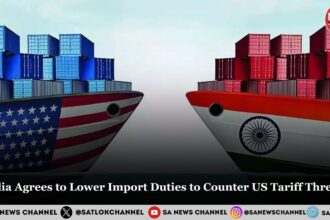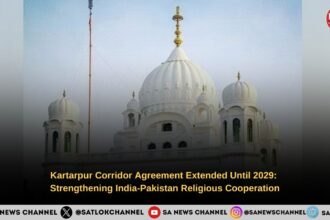President Donald Trump signed a sweeping immigration proclamation on Friday that introduces a substantial $100,000 (approximately ₹84 lakh) annual fee for H1-B visa applications, marking one of the most significant changes to the skilled worker program in recent history. The move, which targets high-skilled foreign workers primarily in the tech sector, represents a dramatic shift in U.S. immigration policy that could reshape workforce dynamics across multiple industries.
Immediate Impact on Tech Industry and Employers
The new $100,000 (~₹84 lakh) fee for H1-B visa applicants will be imposed on employers seeking to hire foreign professionals, creating an unprecedented financial barrier for companies that have traditionally relied on international talent. The proclamation could significantly upend hiring practices in the Bay Area tech industry, where H1-B visas have been a cornerstone of talent acquisition strategies.
Commerce Secretary Howard Lutnick revealed that the administration determined the $100,000 annual fee after consulting with various companies. While the payment structure remains under discussion with the Department of Homeland Security, the substantial fee indicates a clear intent to restrict H1-B visa usage.
The timing of this announcement has created confusion among employers and workers alike. Trump confirmed that the fee applies only to future H1-B visa holders, as tech companies and travelers struggled to interpret the proclamation’s immediate implications.
Gold Card Visa Program vs. H1-B Visa
Alongside the H1-B visa restrictions, Trump introduced a “gold card” visa program allowing wealthy foreigners to obtain permanent residency for $1 million (about ₹8.4 crore). This creates a stark contrast in immigration policy, establishing different pathways based on financial capacity rather than skills alone.
While the gold card visa serves wealthy investors, the H1-B visa remains the primary route for high-skilled professionals. This dual approach reflects the administration’s strategy of limiting traditional work-based immigration while promoting investment-driven immigration.
Legal Challenges to H1-B Visa Fee
The proclamation faces immediate legal scrutiny. Aaron Reichlin-Melnick, senior fellow at the American Immigration Council, stated that “the president has literally zero legal authority to impose a $100,000 fee on visas,” suggesting constitutional challenges are likely forthcoming.
Legal experts question whether the executive branch can unilaterally impose such a high H1-B visa fee without congressional approval. Typically, changes of this magnitude require legislative action.
Broader Implications for International H1-B Visa Workers
For international professionals, especially in STEM fields, the $100,000 (~₹84 lakh) H1-B visa fee could make the visa completely inaccessible, with early-career workers and recent graduates potentially losing U.S. work opportunities. Employers may reserve H1-B visa sponsorships only for highly compensated positions, fundamentally altering the program’s reach.
This policy change affects not only prospective immigrants but also current H1-B visa holders and their employers who are planning renewals or status changes. Companies must now reassess their hiring strategies and budget allocations.
Economic and Workforce Considerations
The Trump administration frames the H1-B visa fee as a protection measure for American workers. However, critics argue that the substantial fee creates artificial scarcity rather than addressing workforce development needs.
Tech companies and consulting firms that heavily utilize H1-B visa workers are expected to respond swiftly, influencing the policy’s long-term viability and implementation timeline.
Conclusion
Trump’s introduction of the $100,000 (~₹84 lakh) H1-B visa annual fee represents a seismic shift in U.S. immigration policy, prioritizing financial barriers over skills-based selection. The effectiveness of this policy will depend on legal challenges, industry adaptation, and broader economic impacts.
As companies navigate these unprecedented changes, the H1-B visa landscape faces its most significant transformation in decades, potentially reshaping how America attracts and retains international talent in an increasingly competitive global economy.









